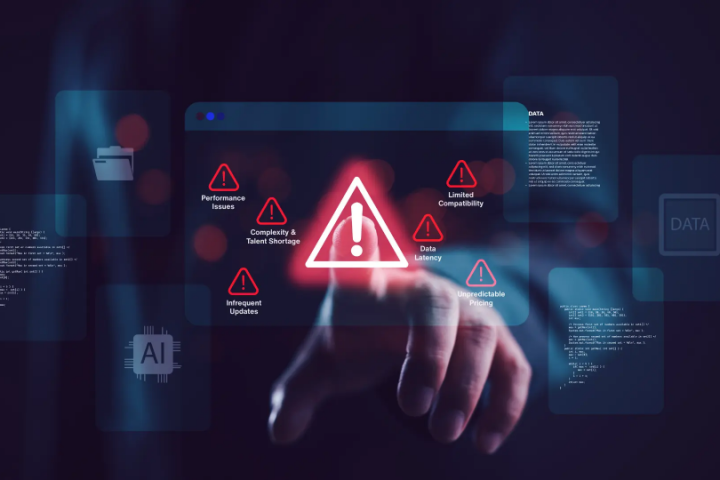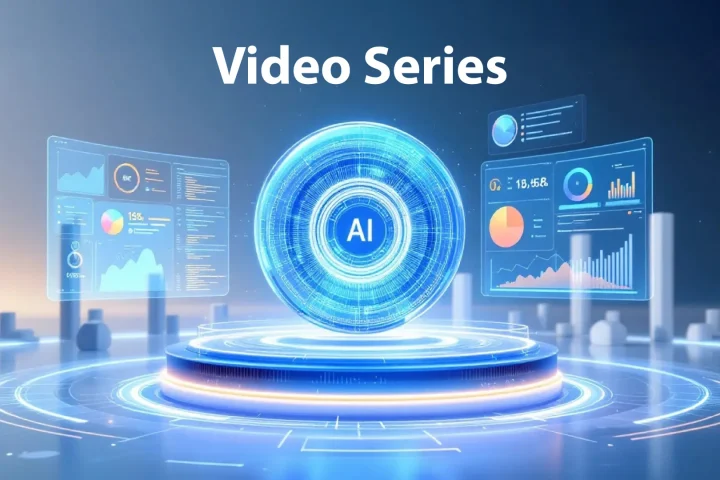
What is Digital Transformation and why is it so critical? From discussions I’ve had with many, it seems to be a buzzword that is often related to technologies and not to something tangible, business and human-focused. Let’s look at one of the more popular definitions from leading market analysts Gartner.
“Digital Transformation can refer to anything from IT modernization (for example, cloud computing), to digital optimization, to the invention of new digital business models. The term is widely used in public-sector organizations to refer to modest initiatives such as putting services online or legacy modernization. Thus, the term is more like “digitization” than “digital business transformation.”
For our platform, Digital Transformation (DT) can be thought of as modernizing your AS/400 to IBM i. DT involves a change in leadership approach, different thinking, encouragement of innovation, using new business models and incorporating digitization of assets. The end goal should be to improve the experience of your organization, employees, customers, suppliers, partners and stakeholders. It is much more about focusing on the human side of how we make things better and and how we evolve as people and as companies than it is about technology. Technology enables digital transformation, but digital transformation is fundamentally not about technology.
We hear a lot of buzz around ‘digital transformation’ as a set of words. Many companies are not able to leap from thinking about technologies, to why they need to do it. In other words, to turn radical focus on our customers, into actions in the business. We need to think about doing business differently, stepping back from the technology and thinking about what we’re trying to solve and why we’re here. The ‘why‘ gives you the value so that you can choose what technologies are going to best enable you to do it.
So defining that, let’s make digital transformation a bit less nebulous and easier to understand. Think about a radical focus on customers and employees. What comes out of that is looking at how you can have a better relationship with your customer and how you make your employees happier in what they do – ultimately to create happy and productive employees that will naturally create happy and satisfied customers.
Digital Transformation is rapidly growing. IDC predicts that worldwide spending on Digital Transformation will reach $2.3 Trillion in 2023 where the figures for 2019 have already reached $1.18 trillion.
*Source: Oct 28, 2019 Worldwide Spending on Digital Transformation
Business has had to change focus in 2020 and here in Europe, we are all sitting at home on lockdown due to the Coronavirus. There are companies that will not survive this next few months and others that have gone into hibernation in hopes to endure. Some companies have been able to deal with the changes very quickly and pivot to do new things, both to survive and help out in these challenging times.
A few examples are:
Decathlon is a sports store that sells across Europe. They have modified their scuba gear and added some 3D printer parts to supply breathing assistance with oxygen in order to avoid unnecessarily having to go on ventilators.
Zara, a big clothing retailer, have started manufacturing masks and personal protective equipment.
Giorgio Armani, Louis Vuitton and many other companies have changed their perfume manufacturing to hand sanitizer.
Dyson, McLaren automotive, Mercedes formula one, Rolls-Royce, Ford, and others pivoted to help build ventilators for people in just a few weeks. They identified a need and a way to continue operations.
If you look at a lot of these companies, they not only have production facilities, they also have great engineers. Dyson develops vacuum cleaners but they approached market challenges with a fresh mindset of What can we build? What do we have as core skills? What are the things that we can do? Amazon is hiring globally to meet the needs of so many people who are quarantined at home. But they’re also supplying governments across Europe with their delivery network to help get kits out to do testing.
There are companies that have been dramatically affected because they’re struggling to meet this change. British Airways, KLM, Lufthansa and many airlines have laid staff off because their industry has fundamentally shut down. The same with hotels and car manufacturers. BMW, who are innovative in many cases, is unable to deal with the pace of change. Whereas Tesla owns the entire stack of what they deliver, so they’re now looking at ‘no-touch’ deliveries and can change adapt quickly.
Digital transformation is the ability to innovate and quickly adapt to changing conditions. Companies need to think about how they can become agile and have systems that support this approach. Current events have brought this into stark focus.
Examples such as contact-free delivery, web stores and customer support. Many businesses are struggling to keep up or don’t offer these capabilities because they have always used older methods (telephone or manual input). In the United States we are working with local governments to help out with remote cheque printing and remote access to systems as they have had to close their offices. Many companies need remote access to their core IBM i systems, reports and data to keep running.
On the hand, some organizations are struggling to deal with the increased workload and volume of orders. There is no doubt that events in 2020 are causing rapid change for most organizations out there today.
Some of the IBM i community are adapting and helping others by proving crucial technologies and services during this time. A few examples include:
- COMMON.org is hosting COMMON iNSIGHT 2020, the Netflix of IBM i educational content.
- iTech Solutions is providing free system monitoring and virtual education
- IBM announced that THINK Digital is now a virtual conference and free to the world.
- Fresche has made several solutions available for free to help clients with remote connectivity, resources and skills, as well as digital documentation creation and distribution.
Many other partners and ISVs are also lending a hand to help businesses impacted.
One of the critical things you read in any report or white paper about digital transformation is that the failures are almost always at an organizational level.
This points to a lack of buy-in across the business and a lack of understanding of why this needs to happen and what the goals are.
Gartner has listed some of the most common failure points including;
- A change-resistant culture: A business can have old structures, processes and culture that doesn’t support change. Moving from fear of failure to embracing experimentation can be a scary to many.
- People won’t share or collaborate: Some companies have fostered silos and internal competition by design, or have departments not aligned by accident. All of which stifle cross-functional teams.
- The business isn’t ready: Some people just don’t see the future or may have hurdles they need to cross before they can transform.
- The talent gap: Data scientists, designers and creative thinkers are often not part of the makeup in traditional companies.
- Current practices don’t support talent: you might be able to find new talent but do the culture and processes keep you from retaining them? Expectations of using modern tools and pipelines are high among some talent pools.
- Change isn’t easy: You have to be in this for the long haul and be prepared to wear down resistance so people and companies can only go on a journey at a certain pace. The marathon runner’s mindset can be key here.
If you’re looking at digital transformation, you need to get full buy-in. It’s important that everybody understand what they’re trying to achieve and why they are doing it.
So what distinguishes digital organizations over traditional organizations? Speed over perfection, data over intuition, talent over title, having an impact, constant improvement, obsession with the customer, autonomy, and transparency. If there’s one thing that drives digital transformation, it is the obsession with the customer.
Build that strong relationship so that you’re sticky with the client. Build loyalty, so you’re not just a generic choice. Innovation can come from anywhere in the company, we just need to give people the autonomy to be able to do the great things that will drive these new business models. Sharing information and creating transparency across the company can enable people to collaborate and work more effectively as a team.
Putting the vision for DT in place along with the right communication and people is vital for success. It’s also key to helping you choose the technologies that will help you achieve this vision.
When it comes to technology, this is the how to the why and what we talked about earlier.
For many IBM i companies this includes some of the following areas:
- Operations: Looking at how to streamline operations, see where you are unique and where work can be done in a different way or with a different model. Think about what you do, not how you do it today. Operational efficiency can easily make the difference between growth and stagnation for many.
- Data value & security: Data has gone from being ‘the stuff in the database’ to a key asset. Mining this data and leveraging insight from it is part of the transformation strategy. For many companies using BI, analytics, blockchain and AI solutions can unlock enormous value in your existing data, enabling you to see trends, threats and opportunities. This value must also be structured in such a way that it’s accessible yet secure.
- Infrastructure: Do you need all the infrastructure you have today and should you consolidate? Does it give you an advantage or help your client? John Deere found that by leveraging the GPS in their customer’s tractors, adding IoT and using cloud services like weather info, they could provide their customers with higher crop yield. Are the languages and systems delivering the pace of change you need? Can you find staff to manage these systems? RPG, COBOL and CA 2E(Synon) run many businesses today with applications that are highly customized. Businesses may find it hard to attract new talent that want to work with the legacy applications that run on IBM i systems. While IBM i is innovative, the applications that run there often aren’t.
- Disruption and innovation: This is perhaps the hardest, most nebulous concept for many traditional companies. Disruption is easy to see in hindsight with Netflix and Blockbuster, Uber and taxi companies but how do you disrupt yourself or innovate to compete with disrupters? Find people who think differently. Innovation doesn’t have to cost a fortune. BMW has about 134,000 employees worldwide but started innovating with a team of 4 people. Think about how you could carve out some time for even 1 person if that’s all you can afford. The key is, you can’t afford not to do it.
- Process: Many processes in our businesses exist because it’s the way things have always been done – or that’s what Jody from accounts taught you during your onboarding training. I know of companies that are still processing orders via telex. Companies need to take a fresh look at how they are working. Ask ‘where’ you can automate (RPA), streamline, offloaded or even eliminate. Take people from other departments to look at processes and gain an outside perspective. Understand Agile and DevOps is not just a development technique, but rather a toolset for business change.
To ensure success with transformation, our legacy systems require sustained investment. It is the foundation on which all Digital Transformation and radical customer focus is built. My colleague Chris Koppe says “the best time to start modernization was 10 years ago, but the second-best time is today.” It only becomes harder to survive change, so if you don’t start now, what price you are willing to pay in the future? Chances are it will be way more significant and painful than making an investment in the modernization of your existing systems and starting your digital transformation journey.
Having worked with thousands of IBM i clients, we know one of the major roadblocks is developing your strategy. To help companies get this started, we are offering a free advisory whiteboard session to start mapping out your plan and discussing your options. To schedule your 1:1 session, send an email to info@freschesolutions.com



